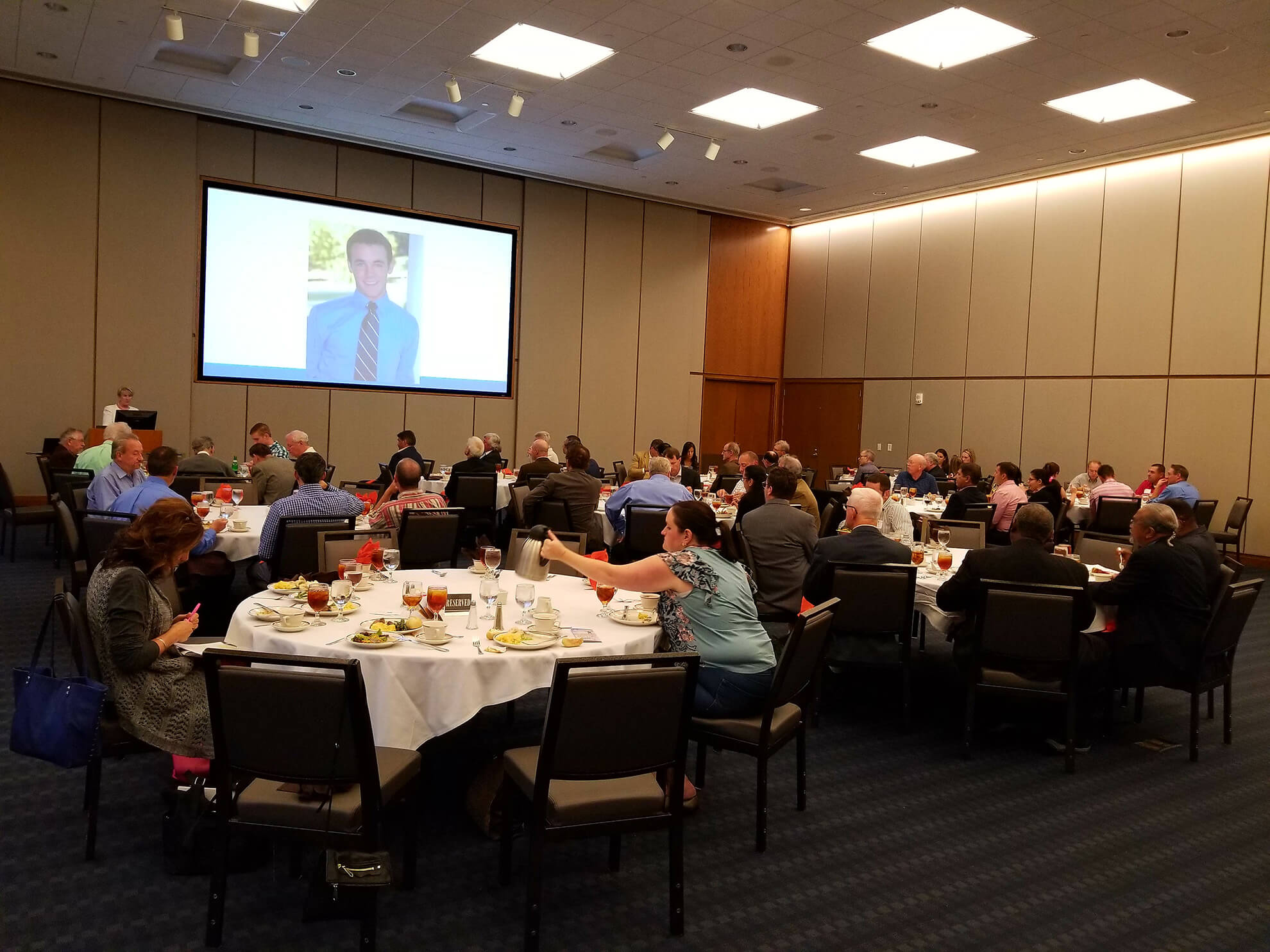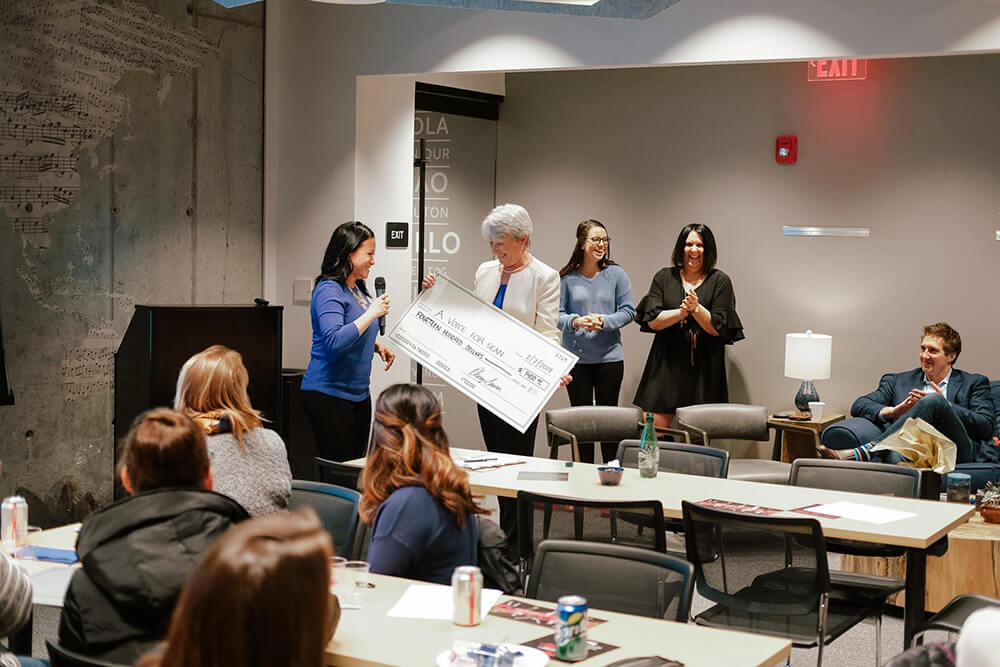Incoming Ohio Dental Association president Dr. Sharon Parsons is aggressively driving change—and keeping families from experiencing the kind of tragedy hers endured.

FOR HIM: An image of Sean Parsons projected as Dr. Sharon Parsons speaks
IT WAS PRACTICALLY AUTOMATIC. Patients—young and vulnerable ones—were prescribed opioid pain relievers almost as a matter of course. “People prescribe what they were taught,” says Dr. Sharon K. Parsons. “When I was in school, we were taught to manage pain. Opioids were marketed heavily. Doctors and dentists were taught that they were failing patients if they did not prescribe enough. We now know these falsehoods were pushed by the companies that made the drugs and made billions of dollars.”
Dr. Parsons points out that adolescents and young adults are particularly vulnerable because between ages 13 and 26, the prefrontal cortex is still forming. Those exposed to opioids during this crucial developmental stage are five times more likely to become addicted. Why have so many patients received opioids, and why do thousands more continue to receive them when ibuprofen and acetaminophen combined is more effective, with fewer side effects?
Dr. Parsons—who took home the Lucy Hobbs Project’s Humanitarian Award this year—is all too aware of the problem. She’s dentistry’s most visible and successful crusader to change the way opioids are prescribed, especially to those most at risk. Sadly, she was thrust into the cause following the overdose death of her son Sean in 2015. She’s now reshaping policy in her home state of Ohio and nationally, speaking to groups and changing minds.
The Rust Belt runs right through Columbus, Ohio, where she practices. Although the city’s fortunes have revived in recent years, Ohio still had the nation’s second-highest per capita drug-death rate in 2017, according to the CDC.
Dr. Parsons stresses that at the moment, education is key to putting the brakes on the epidemic. She has already successfully lobbied for change in the Buckeye State, speaking in favor of revising the Ohio Dental Association’s opioid policy and mandating continuing education. “I had to get up and explain and challenge,” she recalls. “When [the revision] passed unanimously, I cried.”

CHECK, PLEASE: Dr. Parsons receiving a donation for her foundation
She was also a voice for policy change within the ADA, which publicly came out in support of mandates on prescription limits and continuing education last year. “I was in Washington, D.C., last winter for ADA Dentist and Student Lobby Day, and they introduced the proposed policy and debated it,” she says. “One of the most important parts was mandated continuing education. Most dentists oppose mandates of any kind, so they were complaining about it. I stood up in front of over a thousand people and told my story and explained that the education was not just for pharmacology; they already know that part. The education is to learn about addiction. This is something we were not taught in school.” That policy change, too, passed unanimously.
Dr. Parsons points to groups like the Ohio Opioid Education Alliance as a possible model for informing kids and parents directly, getting the word out at home and school, and pushing common-sense safety tips like promptly disposing of leftover medications so they don’t become a danger. She also founded a nonprofit, A Voice for Sean, dedicated to education and advocacy.
This October, Dr. Parsons will become president of the Ohio Dental Association, only the third woman ever elected to the position. Her son, Michael, will join her in practice soon after graduating from Detroit Mercy School of Dentistry. Saving lives is a powerful motivator, and Dr. Parsons herself has no plans to slow down on opioid education despite her new responsibilities. “We need alternatives,” she says. “More and better ones.”




